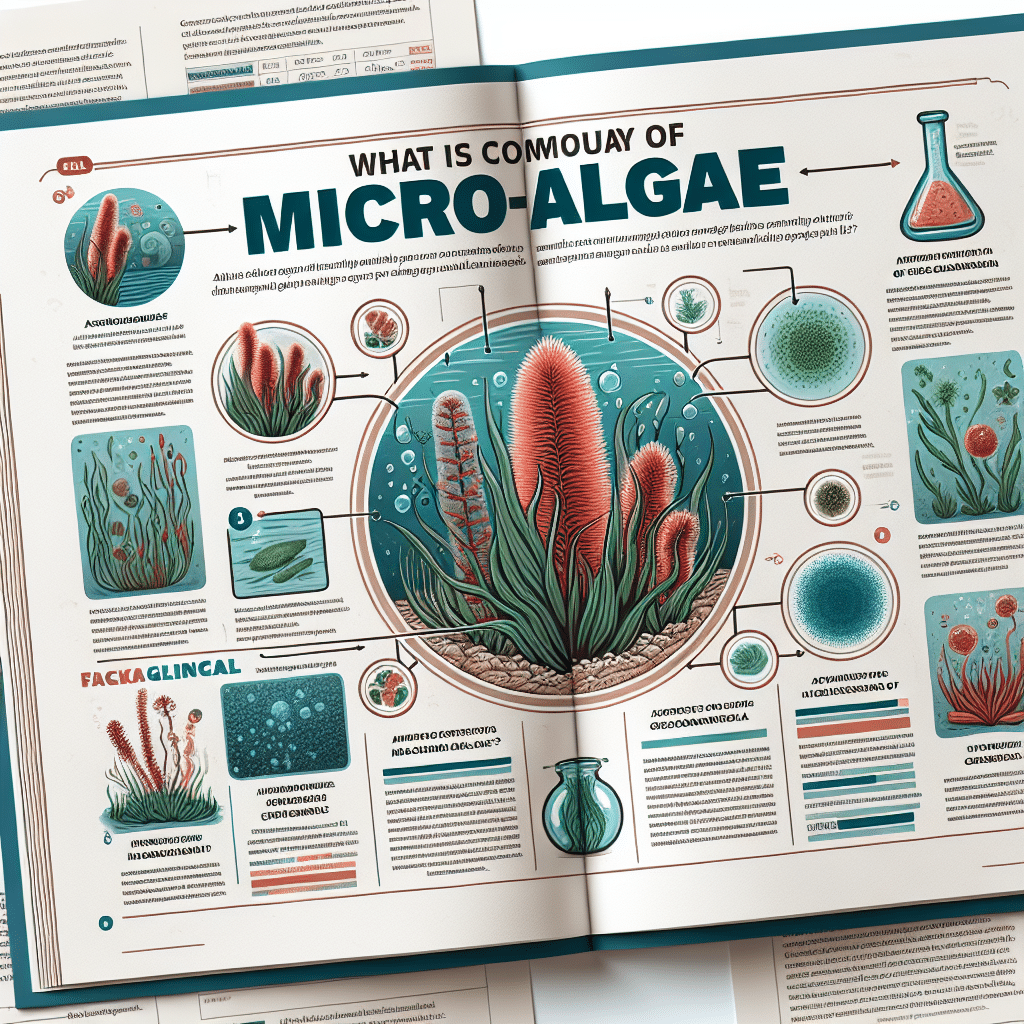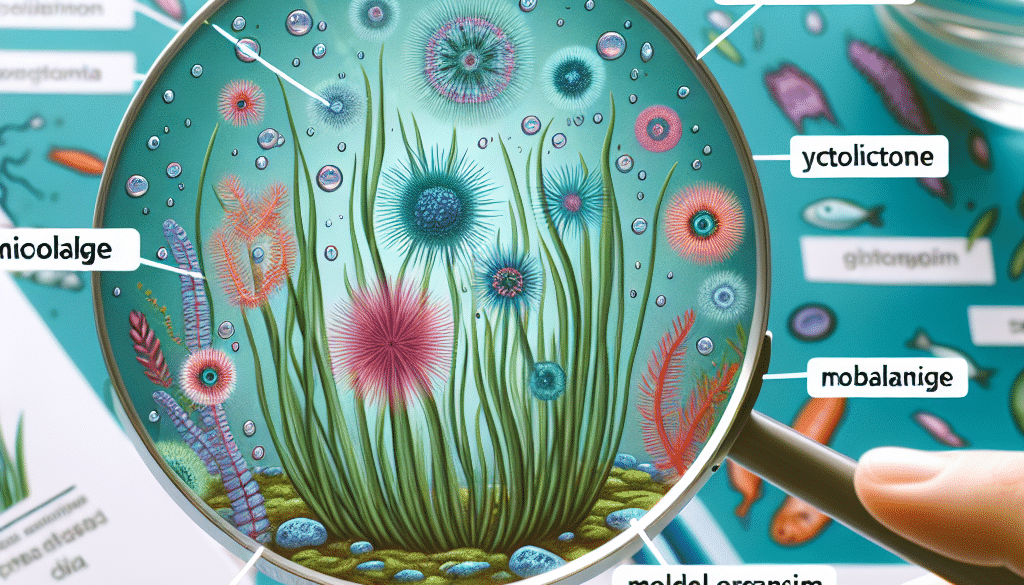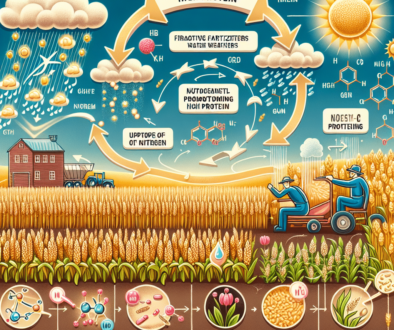What Is Microalgae Commonly Known As?
-
Table of Contents
- Microalgae: Nature’s Tiny Powerhouses and Their Common Names
- Understanding Microalgae and Their Common Names
- The Ecological Importance of Microalgae
- Microalgae in Industry: A Sustainable Future
- Case Studies and Statistics: Microalgae in Action
- Conclusion: Embracing the Potential of Microalgae
- Discover ETprotein’s High-Quality Protein Products
Microalgae: Nature’s Tiny Powerhouses and Their Common Names

Microalgae, the microscopic algae predominantly found in marine and freshwater systems, are often referred to by various common names that reflect their diverse shapes, sizes, and colors. These tiny organisms are not only fundamental to aquatic ecosystems but also hold immense potential for sustainable biotechnological applications. In this article, we will explore the common names of microalgae, their significance, and the burgeoning industries that are harnessing their power.
Understanding Microalgae and Their Common Names
Microalgae are a diverse group of photosynthetic organisms that can be found in almost every aquatic environment. They range from single-celled entities to complex multicellular forms, and their common names often derive from their appearance, color, or habitat. Here are some of the most well-known types of microalgae and their common names:
- Chlorella – Often called green algae due to its high chlorophyll content, Chlorella is renowned for its nutritional benefits.
- Spirulina – This blue-green algae is a popular dietary supplement known for its spiral-shaped filaments.
- Diatoms – Recognized for their unique silica shells, diatoms are sometimes referred to as “jewels of the sea” or “living opal.”
- Dunaliella – Named after its discoverer Michel Felix Dunal, Dunaliella is often called green algae and is notable for its ability to thrive in highly saline conditions.
- Haematococcus – Known for producing astaxanthin, a powerful antioxidant, this microalga is commonly referred to as blood rain due to its red coloration under stress.
These common names are not only indicative of the microalgae’s physical characteristics but also hint at their ecological roles and potential uses.
The Ecological Importance of Microalgae
Microalgae play a crucial role in aquatic ecosystems. They are primary producers, forming the base of the food web and contributing significantly to global oxygen production through photosynthesis. Here are some key ecological functions of microalgae:
- They serve as a food source for a wide range of marine organisms, from tiny zooplankton to large whales.
- Microalgae are involved in nutrient cycling, helping to regulate the availability of essential elements like nitrogen and phosphorus in aquatic environments.
- They contribute to the sequestration of carbon dioxide, thus playing a part in mitigating climate change.
The ecological significance of microalgae cannot be overstated, as they are integral to the health and balance of marine and freshwater habitats.
Microalgae in Industry: A Sustainable Future
The potential of microalgae extends far beyond their ecological roles. These organisms are at the forefront of several sustainable industries, thanks to their ability to produce valuable compounds. Some of the industrial applications of microalgae include:
- Biofuels: Microalgae can be cultivated to produce biofuels, offering a renewable and cleaner alternative to fossil fuels.
- Nutraceuticals: Rich in proteins, vitamins, and antioxidants, microalgae like Spirulina and Chlorella are used as health supplements.
- Bioplastics: Some microalgae can produce biodegradable plastics, providing an eco-friendly solution to plastic pollution.
- Wastewater Treatment: Microalgae can absorb nutrients and heavy metals from wastewater, purifying it in the process.
- CO2 Capture: By photosynthesizing, microalgae can capture carbon dioxide from industrial emissions, reducing greenhouse gas levels.
These applications demonstrate the versatility of microalgae and their potential to contribute to a more sustainable and environmentally friendly future.
Case Studies and Statistics: Microalgae in Action
Several case studies and statistics highlight the growing importance of microalgae in various sectors:
- A study on the use of Spirulina as a dietary supplement showed significant improvements in the nutritional status of undernourished children.
- Research into biofuel production from microalgae suggests that they could meet up to 5% of the global demand for transportation fuels by 2030.
- Companies like Algenol have successfully used microalgae to produce ethanol, boasting yields that are four times higher than those of traditional corn-based ethanol.
These examples underscore the practical benefits and commercial viability of microalgae-based products and technologies.
Conclusion: Embracing the Potential of Microalgae
In conclusion, microalgae, commonly known as green algae, blue-green algae, or diatoms, among other names, are proving to be invaluable to both ecosystems and industries. Their ability to produce a wide array of useful substances while also performing ecological services positions them as key players in the pursuit of sustainability. As research continues to unlock the secrets of these microscopic powerhouses, we can expect to see even more innovative applications that benefit both the environment and society.
Discover ETprotein’s High-Quality Protein Products
If you’re interested in the nutritional potential of microalgae and other plant-based proteins, ETprotein offers a range of high-quality protein products. Their offerings include organic rice protein, pea protein, and various seed proteins, all characterized by a neutral taste and non-GMO, allergen-free attributes. ETprotein’s products cater to industries such as nutraceuticals, pharmaceuticals, and food and beverage, providing comprehensive protein solutions for a variety of needs.
About ETprotein:
ETprotein, a reputable protein and L-(+)-Ergothioneine (EGT) Chinese factory manufacturer and supplier, is renowned for producing, stocking, exporting, and delivering the highest quality organic bulk vegan proteins and L-(+)-Ergothioneine. They include Organic rice protein, clear rice protein, pea protein, clear pea protein, watermelon seed protein, pumpkin seed protein, sunflower seed protein, mung bean protein, peanut protein, and L-(+)-Ergothioneine EGT Pharmaceutical grade, L-(+)-Ergothioneine EGT food grade, L-(+)-Ergothioneine EGT cosmetic grade, L-(+)-Ergothioneine EGT reference grade and L-(+)-Ergothioneine EGT standard. Their offerings, characterized by a neutral taste, non-GMO, allergen-free attributes, with L-(+)-Ergothioneine purity over 98%, 99%, cater to a diverse range of industries. They serve nutraceutical, pharmaceutical, cosmeceutical, veterinary, as well as food and beverage finished product distributors, traders, and manufacturers across Europe, USA, Canada, Australia, Thailand, Japan, Korea, Brazil, and Chile, among others.
ETprotein specialization includes exporting and delivering tailor-made protein powder and finished nutritional supplements. Their extensive product range covers sectors like Food and Beverage, Sports Nutrition, Weight Management, Dietary Supplements, Health and Wellness Products, and Infant Formula, ensuring comprehensive solutions to meet all your protein needs.
As a trusted company by leading global food and beverage brands and Fortune 500 companies, ETprotein reinforces China’s reputation in the global arena. For more information or to sample their products, please contact them and email sales(at)ETprotein.com today.














